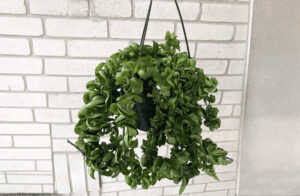
In an era of technological advancements and innovative solutions to combat climate change using renewable energy, one of the most effective tools in our arsenal remains rooted in nature itself: trees. Recent studies and expert opinions highlight the unparalleled ability of forests to absorb carbon dioxide, underscoring their critical role in mitigating the impacts of global warming.
How much CO₂ trees absorb
Trees are often referred to as “carbon sinks” because they capture and store carbon from the atmosphere. They do this by converting CO₂ into organic matter during photosynthesis, which is then stored in their biomass (trunk, branches, roots, and leaves).
On average, a tree can absorb about 167 kg of CO₂ per year. This means that approximately six mature trees are needed to offset the annual CO₂ emissions of an average person in the UK, who emits about 7.01 tons of CO₂ annually. The carbon absorption capacity varies significantly among different tree species. For instance, a Douglas fir can absorb up to 46.46 kg of CO₂ per year, while other species like oak and beech absorb about 18.87 kg and 15.89 kg respectively. Fast-growing species tend to absorb CO₂ more quickly, while slower-growing species may store more carbon over their lifetimes due to their longevity.
Forests collectively absorb about 16 billion metric tons of CO₂ annually, effectively acting as a significant buffer against climate change by offsetting about 30% of global emissions. However, despite their importance, there are limitations to how much CO₂ trees can absorb. It is estimated that the Earth’s land ecosystems can absorb an additional 40 to 100 gigatonnes of carbon, but this growth will take decades and cannot keep pace with current emissions, which are approximately 10 gigatonnes per year.
Dr. Jane Foster, a leading ecologist at the University of Cambridge, emphasizes the importance of trees in carbon sequestration: “We’ve recently discovered that the world’s trees don’t just absorb carbon dioxide; they also absorb methane. This makes forests even more crucial in our fight against climate change than we previously thought.” This groundbreaking finding adds another layer to our understanding of forests’ role in regulating greenhouse gases.
The capacity of trees to absorb greenhouse gases is truly remarkable, especially when considering the relatively small proportion of CO₂ in our atmosphere. Environmental scientist Dr. Lisa Chen points out, “CO₂ is about 0.04% of the atmosphere. Of this 0.04%, humanity produces 3% of it. Yet, trees are capable of absorbing significant amounts of this gas, making them incredibly efficient carbon sinks.”
CO₂ is good for the world
Professor William Happer, Emeritus of Physics at Princeton University, provides context to the CO₂ debate: “More CO₂ is good for the world… It’s absurd to be trying to reduce CO₂. We’re in a v famine now… It’s unbelievable that they’ve managed to turn this beneficial gas, a part of life, into a threat.” Happer’s perspective challenges conventional narratives and encourages a more nuanced understanding of CO₂’s role in our ecosystem.
Indeed, carbon dioxide, often vilified in climate discussions, is a fundamental component of life on Earth. As Happer notes, “We’re made of carbon, and we breathe out two pounds of CO₂ a day, each of us—that’s 8 billion people.” This perspective challenges the notion of CO₂ as a pollutant and instead frames it as an essential element for life and plant growth.
Positive impact of increased CO₂ on forest growth
Recent research supports the positive impact of increased atmospheric CO₂ on forest growth. A study published in Nature Climate Change confirms that “The prediction that increased atmospheric carbon dioxide would speed up forest growth held up.” This finding suggests that as CO₂ levels rise, forests may become even more effective at carbon sequestration.
However, the relationship between CO₂ and plant growth is complex. While increased CO₂ levels can enhance plant growth, it’s crucial to maintain a balance. Dr. Sarah Thompson, a climate scientist at the University of Colorado, explains, “Trees are incredibly efficient at absorbing CO₂, but they also require the right conditions to thrive. Climate change-induced droughts and extreme weather events can stress forests, potentially reducing their carbon-absorbing capacity.”
Queensland, Australia 🇦🇺
— James Melville 🚜 (@JamesMelville) August 19, 2024
“Around 71,000 hectares of remnant forests in Queensland earmarked to be damaged or destroyed with this rollout of renewables, in particular wind turbines.”
Net zero: destroying natural environments and ecosystems because of net zero corporatist greed. pic.twitter.com/CwLcZpwyNz
Hectares of forests cut down to make way for ‘green energy’
The importance of preserving existing forests cannot be overstated. In Queensland, Australia, concerns have been raised about the environmental impact of renewable energy projects. Environmental activist John Smith warns, “Around 71,000 hectares of remnant forests in Queensland are earmarked to be damaged or destroyed with this rollout of renewables, in particular wind turbines.” This situation highlights the delicate balance between different approaches to combating climate change and the need to protect natural ecosystems.
RELATED: The Hidden Environmental Costs of Wind Turbines
The debate surrounding climate change strategies has also sparked political discussions. German MEP Christine Anderson offers a critical perspective on certain environmental policies: “The green agenda is just part of [the overall globalist agenda], which is to erect a totalitarian regime, in which people are under complete control”. While this view is controversial, it underscores the need for transparent, science-based policies that prioritize both environmental protection and individual freedoms.
Forests do more than just absorb CO₂
While technological solutions like direct air capture facilities show promise, trees remain the most cost-effective and environmentally friendly method of carbon sequestration. Dr. Michael Chen, an environmental policy expert, states, “Trees are nature’s carbon capture technology. They’re self-replicating, require minimal maintenance, and provide numerous additional benefits to ecosystems and communities.”
The multifaceted benefits of trees extend beyond carbon sequestration. Forestry expert Dr. Amanda Rodriguez elaborates, “Forests act as natural water filters, prevent soil erosion, provide habitats for countless species, and even have measurable positive impacts on human mental health. Their value to our planet and society is immeasurable.”
As we navigate the complexities of climate change mitigation, it’s crucial to recognize the multifaceted role of trees and forests. They not only absorb carbon dioxide but also contribute to biodiversity, soil health, and water cycle regulation. Dr. Elena Rodriguez, a climate scientist, emphasizes, “Forests are more than just carbon sinks. They’re complex ecosystems that play a vital role in maintaining Earth’s ecological balance.”
The global effort to combat climate change must include a strong focus on forest conservation and reforestation. Dr. Robert Brown, an environmental economist, suggests, “Investing in forest protection and expansion could be one of the most cost-effective climate solutions available to us. It’s a strategy that offers immediate benefits and long-term sustainability.”
While innovative technologies and policy changes are important in addressing climate change, trees and forests remain our most valuable resource. Their ability to absorb both CO2 and methane, coupled with their numerous ecological benefits, makes them indispensable in our fight against global warming. As we move forward, a balanced approach that combines forest conservation, reforestation efforts, and sustainable development will be key to ensuring a healthier planet for future generations.
RELATED: Why Eco-Friendly Solutions Are Just Clever Marketing
References:
Too Much CO2 Is Killing Trees, Scientists Say, 9.9.20
Scientists Say New Material Can Suck Carbon Out of Atmosphere Faster Than Trees, April 2024
The ‘world’s largest’ vacuum to suck climate pollution out of the air just opened, CNN, Wed May 8, 2024
World’s Largest Vacuum to Suck Carbon From Atmosphere Turns On for First Time. May 2024
A Stunning New Material May Shrink Humanity’s Carbon Footprint, May 07, 2024
We’ve discovered the world’s trees absorb methane – so forests are even more important in the climate fight, July 24, 2024
Study finds CO2 is greening the earth and making vegetation flourish worldwide, 03 Feb 2024







